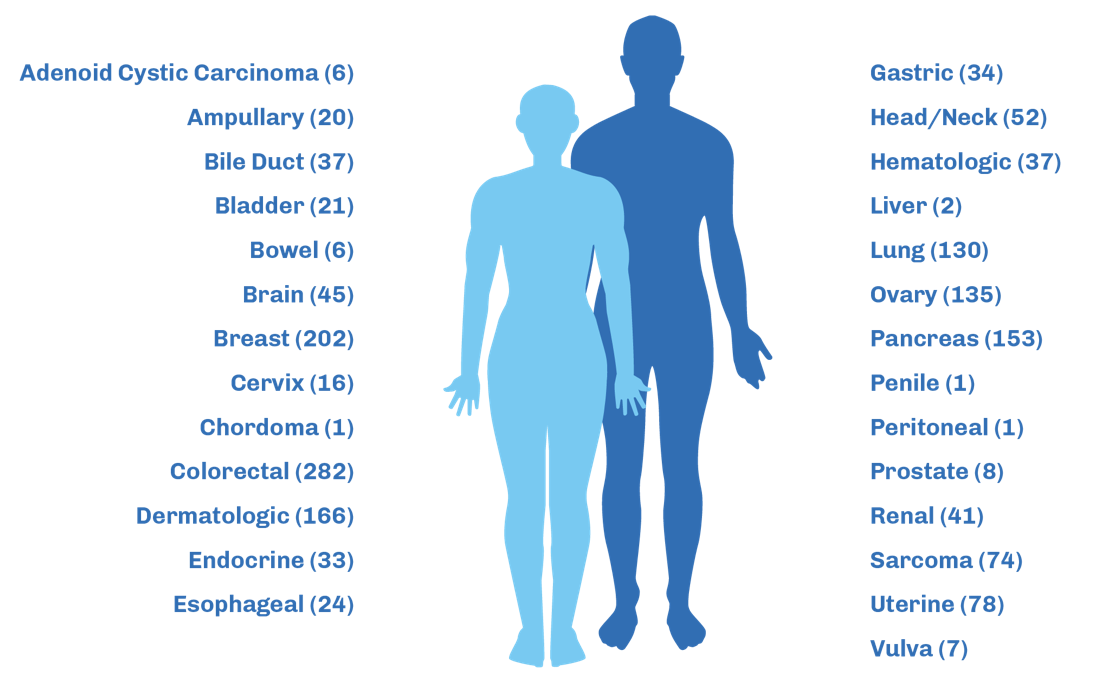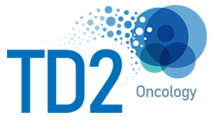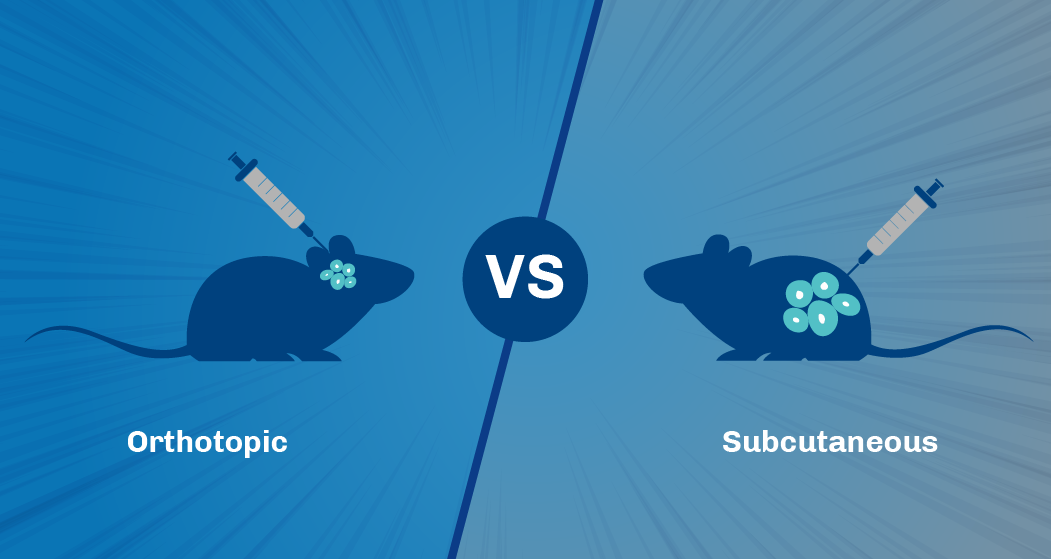Orthotopic Tumor Models
Tumor growth is a complex process, influenced by multiple internal and external factors. One factor that can have a significant impact is the tumor implantation site: subcutaneous or orthotopic. Subcutaneous tumors have the advantage of being easy to implant and palpable. Orthotopic tumors enable us to study the tumor in a more relevant environment providing a solution that more closely mimics the progression of human disease.
Advantages of Orthotopic Implantation:
- Provides a tumor microenvironment that recapitulates true tumor growth
- Allows for the evaluation of metastatic potential from the original tumor
- Offers the ability to track therapeutic responses
- Can be combined with imaging for in vivo and ex vivo analysis
TD2 has developed a comprehensive library of orthotopic models in mouse and human cell lines (Figure 1) at various implantation sites.
Figure 1: Site and cell lines available for orthotopic implantation.

Learn more about our Orthotopic Tumor Models services.
Contact our experts to help advance your orthotopic tumor models with our trusted preclinical research services.
Commonly Utilized Orthotopic Models (Contact Us for Full Model List)
|
Syngeneic Lines |
|
|---|---|
| Intrabladder | MBT-2, MB49 |
| Intracranial | GL261 |
| Intrahepatic | CT-26-luc |
| Intrarenal | RENCA |
| Intrapancreatic | Pano2 |
| Intrathoracic | LL2-luc (In development) |
| Mammary Fat Pad | 4T1, 4T1-luc, EMT6, E0771 |
| Ovarian Ascites | ID8-luc |
| IP Disseminated | Colon-26-luc |
| IV Disseminated | B16-F10-luc |
Figure 2: Survival of orthotopic intrapancreatic
implanted Pan02 in C57BL/6 mice (n=10 mice)
Response to: aPD-1 dosed Q4D x 5
|
Xenograft Lines |
|
|---|---|
| Intracranial | BT-142, BT-474-luc, U251, U251-luc, U87-MG, U87-MG-luc, NCI-H1975-luc, GMB-PDX |
| Intrahepatic | Hep3B, Huh-7-luc |
| Intrapancreatic | BxPC3, BxPC3-luc, AsPC-1, AsPC-1-fluc, Panc-1-luc, HPAF-II-luc |
| Intrathoracic | NCI-H460-luc |
| IP Disseminated | HCT-116-luc, SK-OV-3-luc, Cal-27-fluc, OVCAR-8 |
| Mammary Fat Pad | BT-474, HCC70, MDA-MB-231, MDA-MB-231-luc |
| Ovarian Ascites | A2780, A2780CP, ES-2, OVCAR-8 |
Figure 3: Survival of U87-MG after orthotopic intracranial injection
in Nu/Nu mice (n=10). Response to: Temodar dosed Days 2-5 and Lomustine dosed Days 2, 9.

Pan02 Syngeneic Orthotopic Pancreatic Tumor Model

U87-MG Xenograft Orthotopic Glioblastoma Tumor Model
Orthotopic PDX Models
Models Available:

Utilizing Patient-Derived Xenograft (PDX) models in orthotopic in vivo oncology studies offers a robust platform for evaluating novel cancer therapies in a highly relevant biological context. By implanting human tumors in anatomically correct locations within immunodeficient mice, these models closely mimic the tumor microenvironment, enhancing the predictive power of preclinical studies. This approach enables the exploration of therapeutic efficacy and resistance mechanisms with greater translational potential.
- Enhanced Clinical Relevance: Orthotopic implantation mirrors the natural tumor environment, providing more accurate predictions of clinical outcomes.
- Improved Tumor-Host Interaction: Allows for the study of tumor growth, metastasis, and drug response in a setting that reflects the interactions between the tumor and its surrounding tissues.
- Increased Predictive Value: Facilitates the identification of effective therapies and biomarkers by preserving the original tumor's heterogeneity and architecture.
Comprehensive Preclinical Services
Regardless of the development question, TD2 has the specialized model you need to move your drug forward. Clients have access to humanized models, induction models, as well as specialty surgical and orthotopic models. We specialize in all areas of oncology and work diligently to understand your therapeutics’ mechanism of action. We match that with clinical development strategies for an efficient path forward.
- Non-GLP Safety/Tolerability
- In vitro Pharmacology Assays
- DMPK/ADME
- Orthotopic and Imaging tumor models
- CAR-T and Adoptive Cell Therapy models
- Syngeneic mouse models
- Diet-Induced Obesity Tumor Model
- Humanized Immune Checkpoint Inhibitor Mouse Models
- Metabolomics and Proteomics Analysis
- Flow Cytometry

Additional Resources
GET STARTED
Work with a team who believes in your research as much as you do.
Are you ready to start your preclinical Adoptive Cell Transfer Therapy studies? Partner with a collaborative oncology CRO that believes in your treatment as much as you do. Take the first step today and contact our experts.



